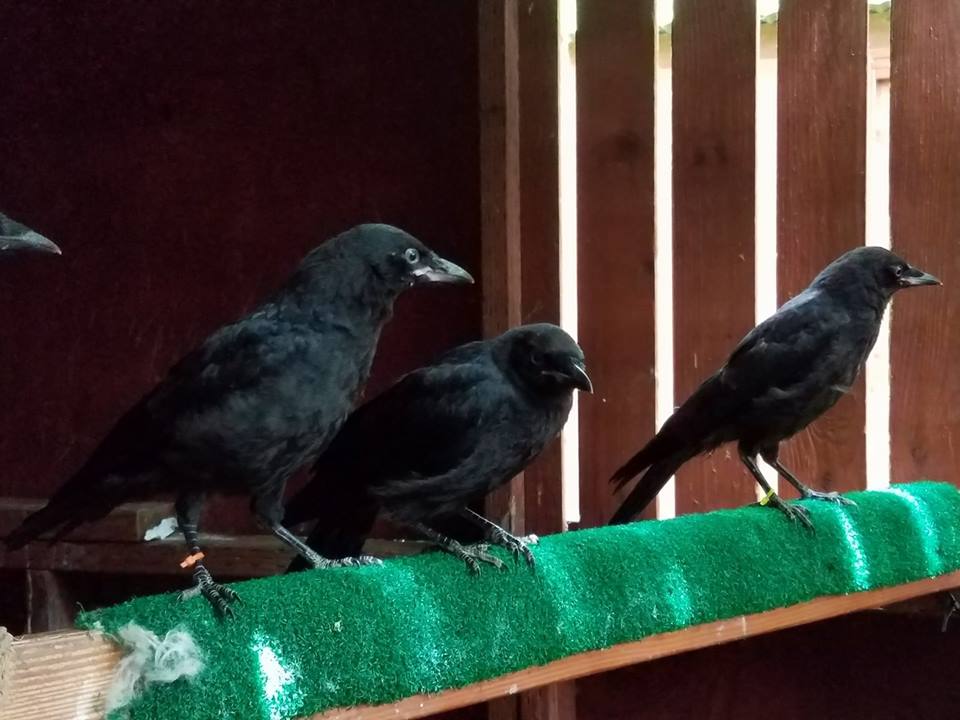CrowsYoung crows leave the nest in late spring/early summer. They are distinguished from adults by their bluish-grey eyes, pink mouth corners, and shorter tail and flight feathers. They spend a few days on the ground learning to fly while their parents continue caring for them. Crows are very intelligent and it is best for young crows to remain with their parents so that they can learn foraging skills and benefit from the complex family and social network important for their survival. If you find a young crow on the ground and it isn't injured, the best thing to do is to bring pets indoors and supervise pets while outdoors until the crow moves on or is able to fly. If the crow is depressed, has weepy or crusty eyes, is bleeding, or has a broken wing or leg, please contact a wildlife rehabilitator as soon as possible. Do not try to care for the crow yourself. Not only is it illegal to care for wildlife without the appropriate permits, but there is also a short time window to address bone fractures and nutritional deficiencies and to ensure that the young crow is adequately socialized with other crows so that it could succeed in the wild when released. |

